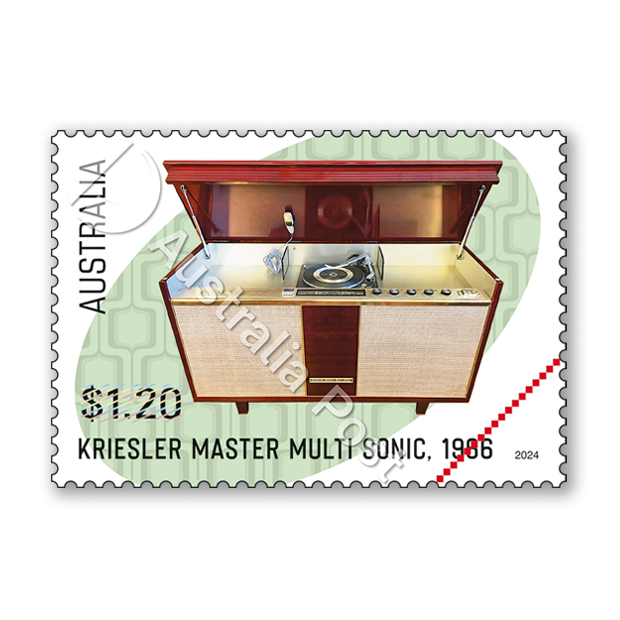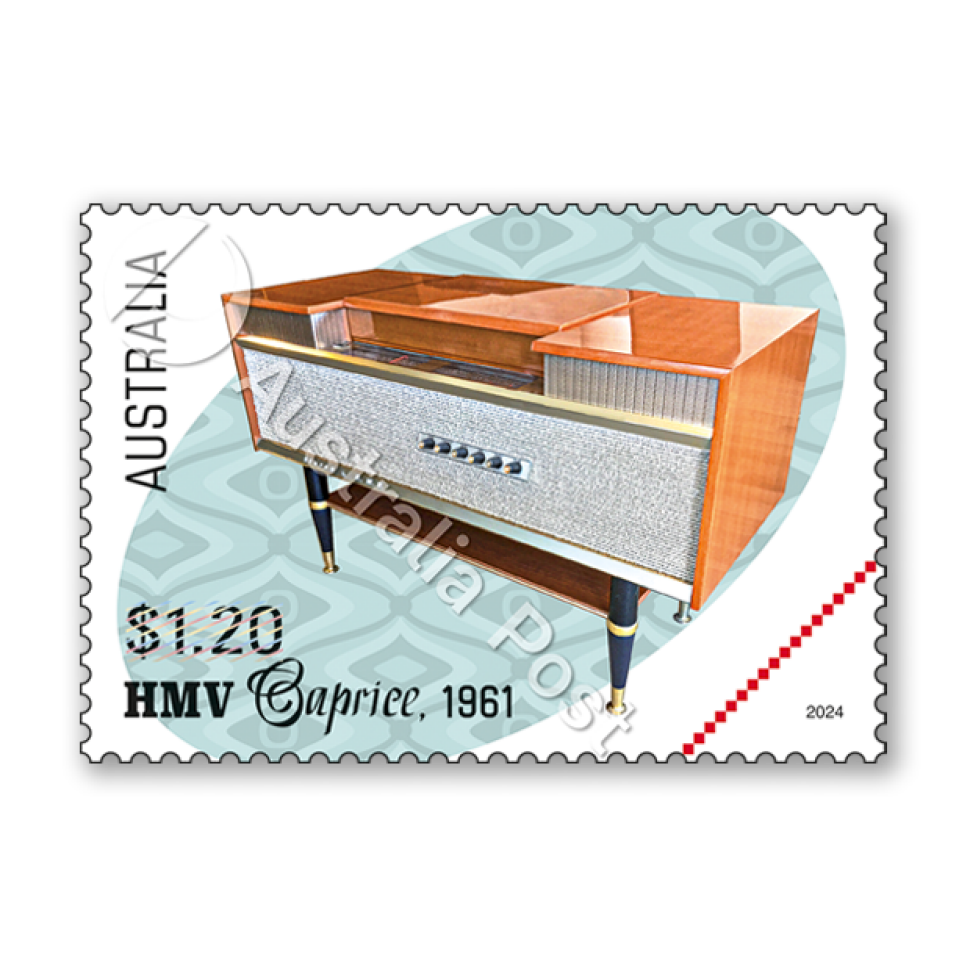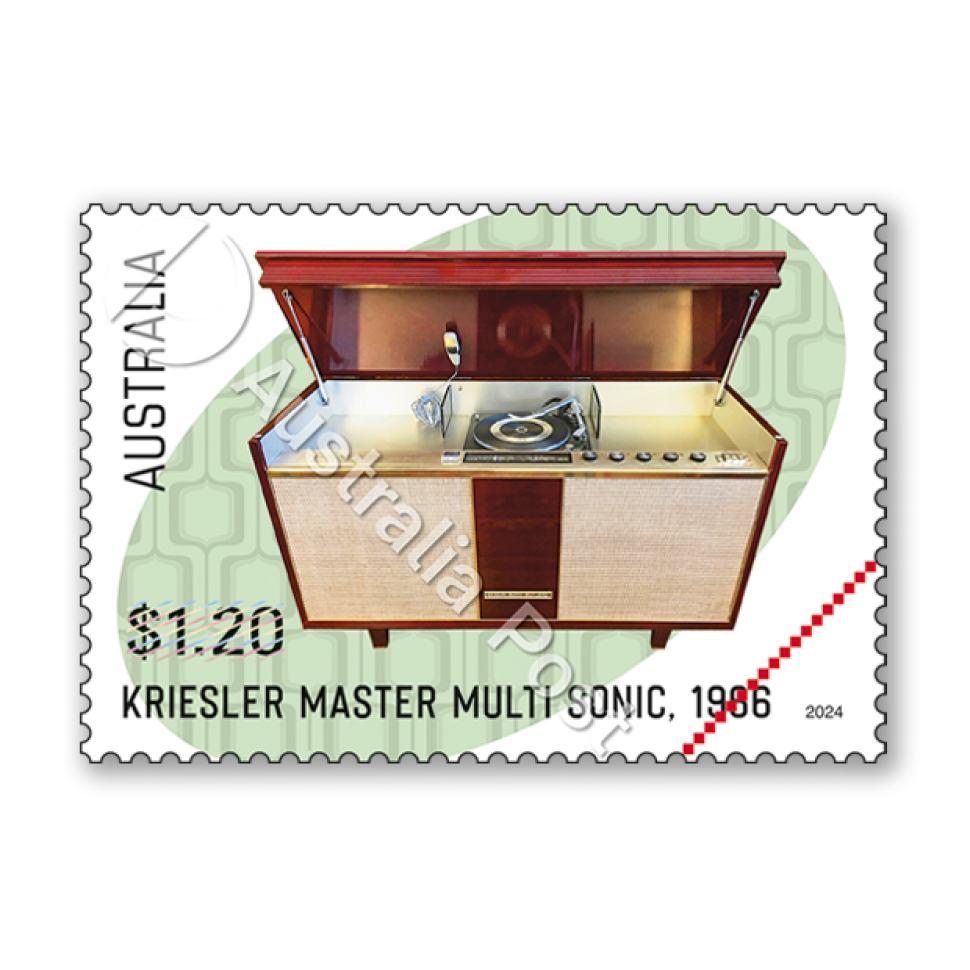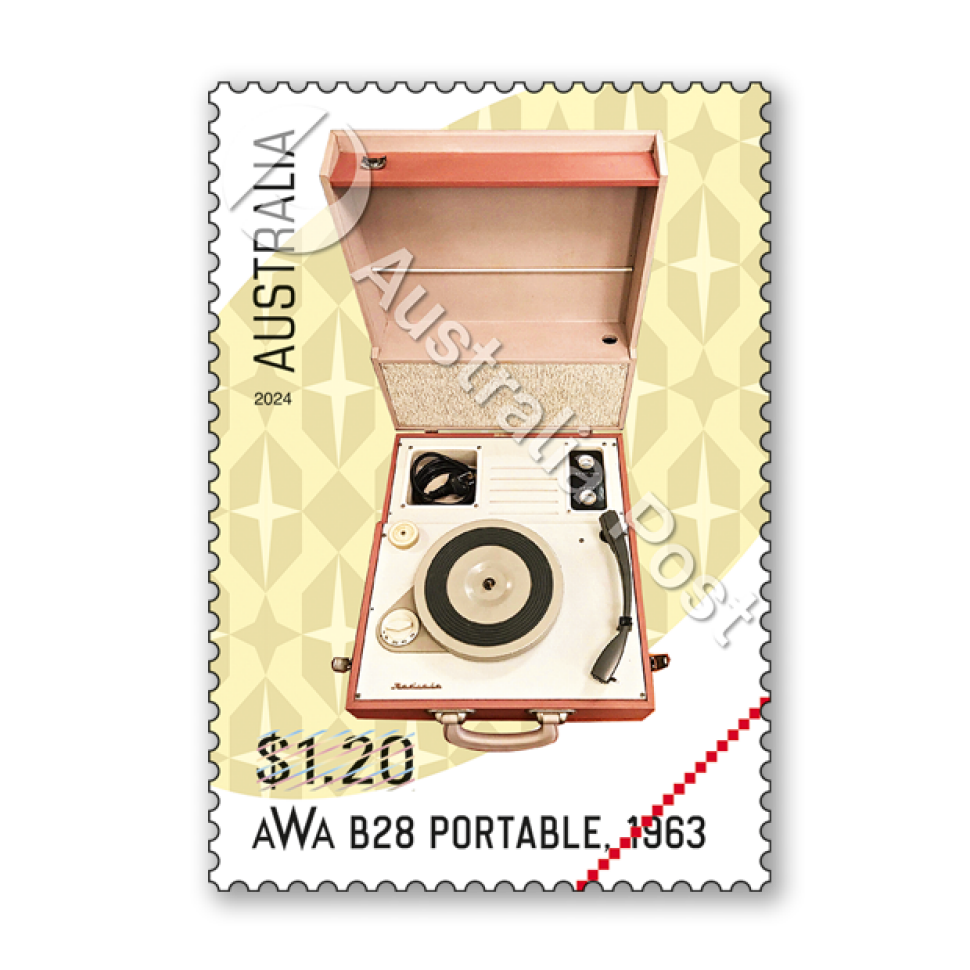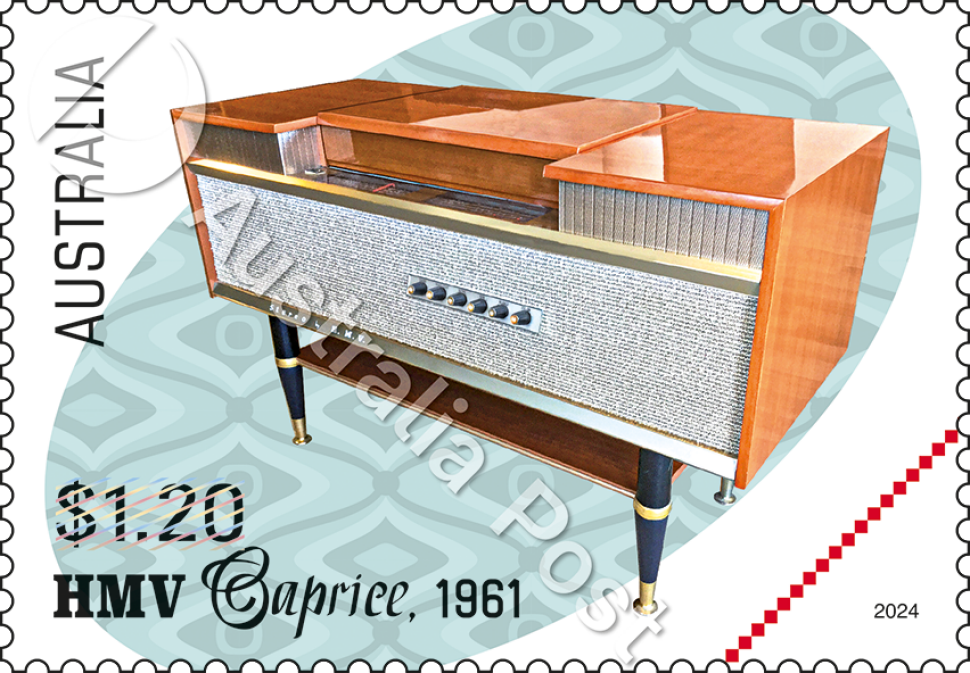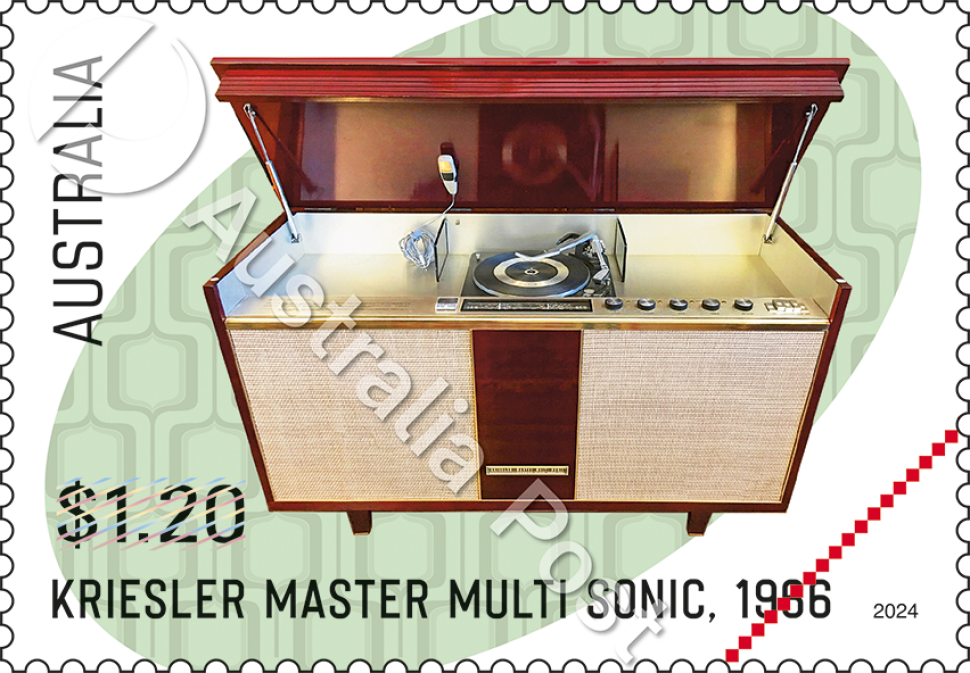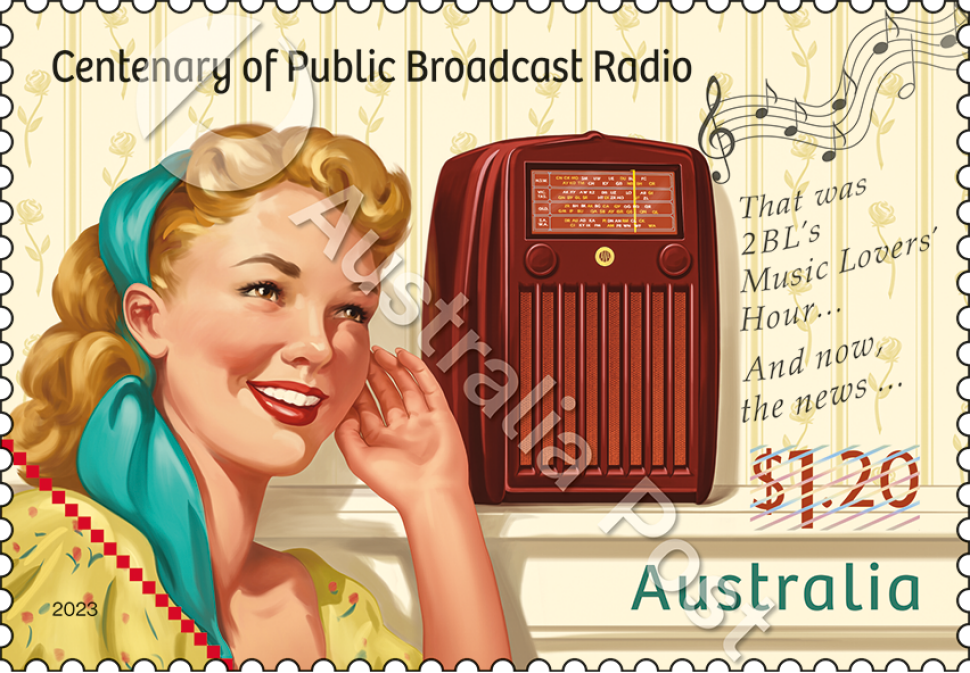Overview
From the early 1950s to the 1970s, many Australians enjoyed gathering around a radio or record player, as well as a unit that combined them both, the radiogram. These multi-function entertainment units were manufactured in Australia, largely from Australian components and cabinetry, though often with turntables imported from Britain. They ranged in size from 30-centimetre portable units to two-metre-long furniture pieces. A key feature was the auto-changer, and most played four record speeds. Early radiograms contained valve amplifiers, until the mid-1960s, when many Australian models began to move to the smaller, cheaper and more energy-efficient transistorised amplifier. The 1960s also saw the introduction of the “stereophonic” record player (with multichannel sound, as opposed to single-channel mono). This transformed the radiogram into the “stereogram”, and some later models even incorporated a television. The golden age of Australian radio and radiogram manufacture took a downturn in the 1970s, when a change in import laws saw an influx of cheaper imports. In the 1980s, the record was made largely redundant by the compact disc, but vinyl has made a distinct mainstream comeback in recent years.
Stamp photographs by Melissa Webb.
Technical specifications
- Issue date
- 20 February 2024
- Issue withdrawal date
- 1 September 2024
- Denomination
- $1.20 x 3
- Stamp design/illustration
- Melissa Webb
- Product design
- Jo Muré, Australia Post Design Studio
- Paper: gummed
- Tullis Russell 104gsm Red Phosphor/Blue PVA Stamp Paper
- Paper: self-adhesive
- Domain Securpost/C Print 100 P8P / Non-Phos
- Printer
- RA Printing
- Printing process
- Offset lithography
- Stamp size (mm)
- 37.5mm x 26mm/26mm x 37.5mm
- Perforations
- 13.86 x 14.6/14.6 x 13.86
- Sheet layout
- Module of 50 (2 x 25 no design)
- FDI Postmark
- Altona VIC 3018
- FDI withdrawal date
- 20 March 2024
$1.20 AWA B28 Portable, 1963
The 1963 pale-pink AWA B28 was a portable and battery-operated mono record player, an affordable option for the youth market. While not a high-quality item, it included AWA’s revolutionary, locally-produced transistor amplifier. AWA (Amalgamated Wireless Australasia Ltd) was the first manufacturer in Australia to produce a transistor radio.
Shop our stamp collectables
Set of Gummed Stamps:
Set of Retro Audio Gummed Stamps
This set of stamps contains the three stamps from the Retro Audio stamp issue.
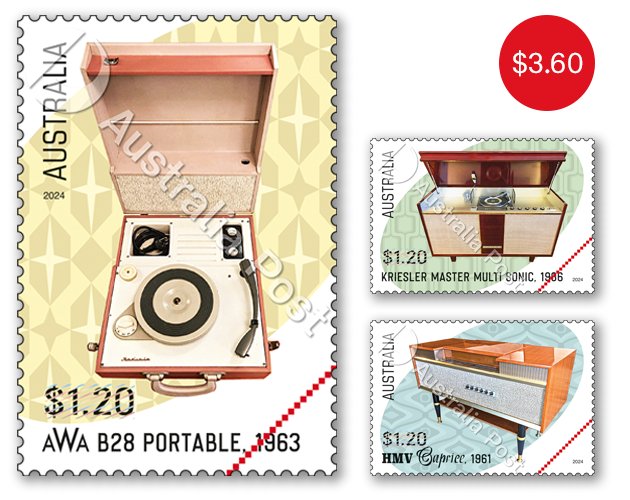
First Day Cover:
Retro Audio Gummed First Day Cover
This first day cover presents the three stamps from the Retro Audio stamp issue with official postmark.
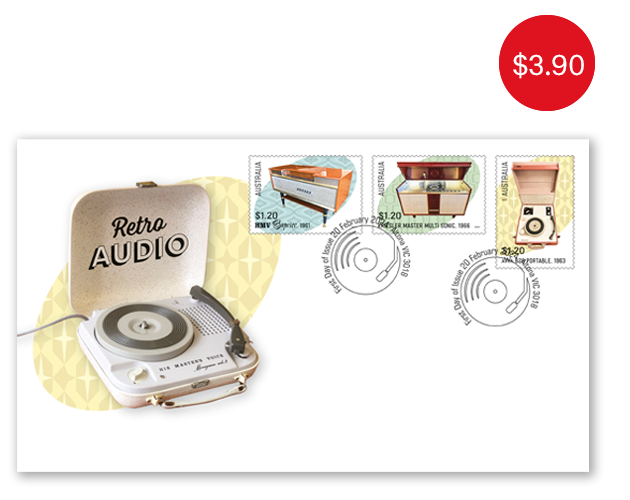
Stamp pack:
Retro Audio Stamp Pack
This Retro Audio stamp pack contains the three stamps from the stamp issue presented in a nostalgic-design quality folder.
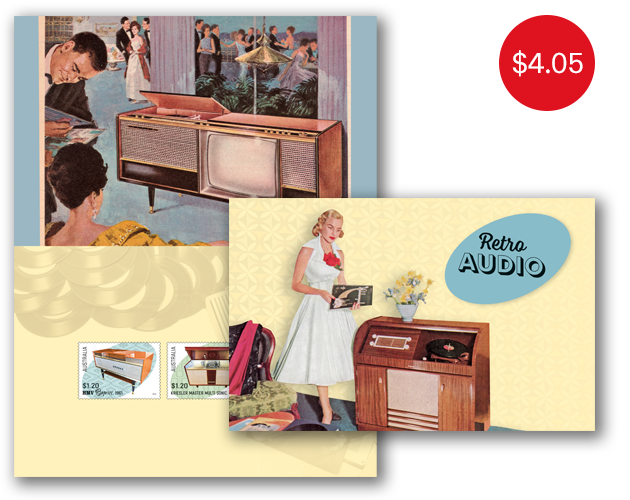
Maxicard set:
Set of Retro Audio Maxicards
This maxicard set contains the three maxicards from the Retro Audio stamp issue.
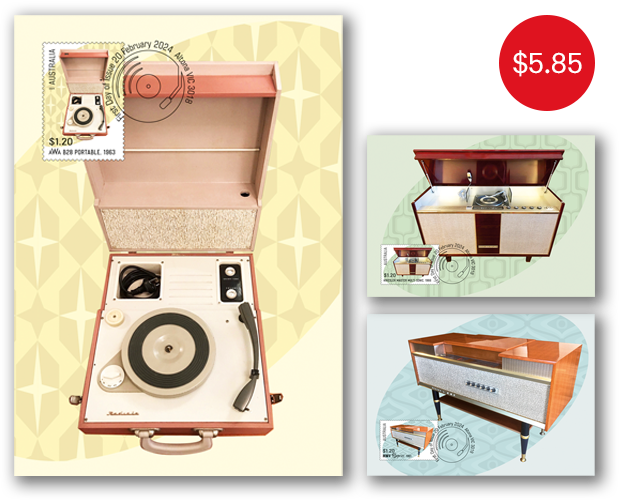
- Set of Gummed Stamps
- First Day Cover
- Stamp pack
- Maxicard set
Additional collectables:
This content was produced at the time of the stamp issue release date and will not be updated.

